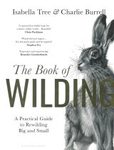![Rivers Rivers]()
Click to have a closer look
About this book
Contents
Customer reviews
Biography
Related titles
About this book
Volume 3 in the British Wildlife Collection, Rivers is the definitive one-book study of this never-more-topical subject. Including detailed information about each of the huge variety of river-types to be found in Britain and their flora and fauna, discussion of individual examples both large and small, and crucial insights into their maintenance and the dangers – felt so acutely in recent years across the UK – of their mismanagement, this is essential reading for serious conservationist and interested layman alike.
Contents
Chapters include:
- Rivers through the ages
- The making and shaping of our rivers
- Assessing the health of our rivers
- River macrophytes
- Plants of river banks, floodplains and valley sides
- Small creatures without backbones: macroinvertebratesin our rivers
- Fish and frogs: cold-blooded vertebrates found in our rivers
- Fur and feathers – birds and mammals of our rivers
- Comparison of three rivers: Meon, Dee and Endrick
Customer Reviews
Biography
Paul Raven has been a conservation professional since undertaking detailed studies of the River Roding in Essex for his PhD. He was the first national conservation officer for the National Rivers Authority, was head of ecology for the Environment Agency, and continues his work in conservation and freshwaters in particular.
Having undertaken PhD studies on the River Tweed and practical research on river transfers at Durham University, Nigel Holmes was from 1978 the nature conservancy council’s river specialist. he developed several survey and assessment methods that are used nationally and internationally, and formed the River Restoration Centre in 1992.
Monograph
By: Nigel Holmes(Author), Paul Raven(Author)
432 pages, ~200 colour photos, tables
"[...] The prose flows easily, poetically in places, with clarity in the technical passages, and all punctuated by copious beautiful colour photos, mostly taken by Nigel Holmes. It really should be on the shelves of everyone who loves our rivers.[...]"
– Simon Bates, The Bulletin of the British Ecological Society 46(1), March 2015
"[...] This very attractive fact-filled and beautifully illustrated book, by two widely respected river ecologists, describes the natural and not-so-natural changes to our rivers since the last ice age and brings us right up to date by citing some of the contentious issues relating to flood control and how rivers might be better managed and cared for now and in the future. It includes chapters on the many plants, amphibians, fish, birds and other animals that live in, on or alongside our rivers and there are excellent, in depth, case studies of three very different rivers – the Meon, Dee and Endrick. [...]"
– Jeff Baker, BTO book reviews









































